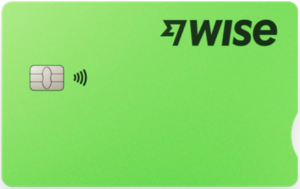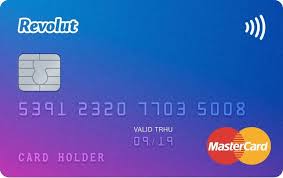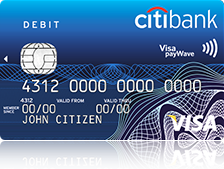Best Travel Cards for Australians Heading Overseas in 2024
We compare the best travel money cards including prepaid cards, debit cards and credit cards. Whether you want ease of access to money at any cost or no-frills or fees cash, find the best money solution when you travel overseas.
Wise - our pick for travel card
- No annual fee, hidden transaction fees, no exchange rate markups
- No minimum balance requirements
- Allows you to make payments and withdrawals wherever you are in the world in over 40 currencies
- Local bank account details in Australia (AUD), the UK (GBP), the USA (USD), Europe (EUR), Canada (CAD) and New Zealand (NZD)
- Available in the US, UK, Europe, Australia, Singapore, Japan and New Zealand
Find out more about the Wise card.
With this card:
- It's very easy to set up and order
- You can receive foreign currency into a multi-currency account linked to the card
- Pay with your Wise card in most places overseas where debit cards are accepted
- Get the mid-market rate for currency conversion
Go to Wise or read our review.
It's not all good news though
- There is a 2% ATM withdrawal fee when you withdraw over $350 during a month
- It takes 7-14 days for delivery
How do I pick the best travel card for me?
Fed up with ATM charges when you travel overseas? Or running out of money when you need it the most? You probably brought the wrong card with you.
It can be tricky to choose the best travel card to use when you travel overseas. The best one for you will really depend on what you need from the card you're using.
You will generally use travel cards to make purchases online, in-stores and to withdraw money at ATMs. All travel cards have these basic capabilities. This means what you should really compare between travel cards are the following:
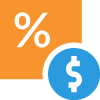
Exchange Rates and Fees
Compare exchange rates and fees

Conditions and limits
Spending conditions and max/min limits

Safety
Make sure your money is secure
Best Travel Cards for Australians Travelling Overseas
Wise is our pick for travel debit card
With this card:
- It's very easy to set up and order
- You can receive foreign currency into a multi-currency account linked to the card
- You can transfer money to a bank account overseas
- Currency conversion using the mid-market exchange rate
It's not all good news though
- There is a 2% ATM withdrawal fee when you withdraw over $350 during a month
- It takes 7-14 days for delivery
Click here to see the full list of cards and how Wise compares
- No annual fee, hidden transaction fees, exchange rate markups
- No minimum balance requirements
- Allows you to make payments and withdrawals wherever you are in the world in over 40 currencies
- Local bank account details in Australia (AUD), the UK (GBP), the USA (USD), Europe (EUR) and New Zealand (NZD)
- It takes 7-14 business days to receive the card
- Can't always access local technical support depending on where you are
- Free cash withdrawals limited to under $350 every 30 days
- Only currently available in the US, UK, Europe, Australia and New Zealand
Revolut - multi-currency travel card
With this card:
- No purchase fee, load fee, reload fee, exchange rate margin or minimum balance requirements
- Unlike other Travel Cards, its free and easy to use the balance of your currency or convert it back to AUD
- Mid-market exchange rate, they add a mark-up for currency conversion during weekends
It's not all good news though
- For the free Standard account, there is a 2% ATM withdrawal fee when you withdraw over $350 during a month
- The premium account costs $10.99 a month, which can really add up if you are not using it often
Click here to see the full list of cards and how Revolut compares
- Very easy to use app
- Free to set up
- No hidden fees or exchange rate mark-ups (except on weekends)
- You can use it to transfer money to a bank account overseas
- Additional fees for using the card on a weekend
- 2% ATM fee once you withdraw more than $350 in any 30 day period
- 3-4 business days before you receive your card
- Ongoing subscription fee for Premium and Metal cards
Citibank Saver Plus - bank travel card
The Citibank Plus Everyday Account - bank debit card. With this card you can:
- withdraw money for free at over 3000 ATMs Australia-wide and overseas
- take advantage of no foreign transaction fees, monthly fees, or minimum opening balance
- transfer money to friends and family anywhere in the world for free
We think this is the ideal debit card whether you're staying local in Oz or travelling to destinations in Asia or Europe.
- No international ATM or transaction fees
- Fee-free international money transfers to any account worldwide
- SMS notifications through Citi Alert
- Cash deposits available within 24-48 hours
- Can't have two cards active at the same time
- $5 account closure
28 Degrees Platinum Mastercard - travel credit card
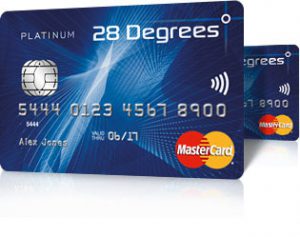
28 Degrees Platinum Mastercard - travel credit card. With this card:
- There are no annual fees
- No overseas purchase fee or currency conversion fee
- You get 55 days interest free on purchases
- Access to free 24/7 concierge service
- Emergency card replacement worldwide
The 28 Degrees Platinum Mastercard has additional benefits including shoppers and repayments benefits cover. For more information read our review.
- Can have 9 additional cardholders
- No overseas purchase fee, or currency conversion fee
- No foreign transaction fee
- Free Replacement Card
- High interest rates after the initial 55 days
- Minimum credit limit is $6000
- No introductory offers or rewards
Learn more about the 28 Degrees Platinum Mastercard
Travelex Money Card - prepaid travel card
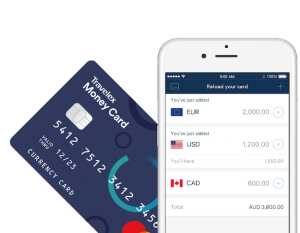
Travelex Money Card - prepaid travel card. With this card:
- There are no ATM fees so you can withdraw cash at no extra cost
- You can access Travelex's online rates
- You can lock in your initial loading cross currency rate
- Ideal for the organised traveller.
- Can load up to 10 currencies including AUD, USD, EUR, GBP, NZD, CAD, THB, SGB, HKD and JPY.
- Smartphone App & Free Wifi Cross
- $0 overseas ATM fees (Australia excluded)
- Free Replacement Card
- 24/7 Global Support
- Limited Currencies
- 5.95% currency conversion rate
- $100 minimum initial load
- 2.95% Australian ATM withdrawal fee
Learn more about the Travelex Money Card
What are the other travel card options?
Check our travel card comparison table for a comprehensive list of fees and features for different travel debit and credit cards available for Australians travelling overseas.
| Debit cards | Monthly Account fee | International ATM fee | International point-of-sale fee | Currency conversion fee |
|---|---|---|---|---|
| ING Orange Everyday Visa | $0 | $5 | 3.0% | 3.0% |
| NAB Classic Banking Visa | $0 | $5 | 3.0% | 3.0% |
| ANZ Access Advantage Visa** | $5 | $5 | 3.0% | 3.0% |
| CBA Smart Access Mastercard | $4* | $5 | 3.0% | 3.0% |
| Travel money accounts | Monthly Account fee | International ATM fee | International point-of-sale fee | Currency conversion fee |
| HSBC Everyday Global Account | $0 | $0 | 0.0% | 0.0% |
| Citibank Global Currency Account | $0 | $0 | 0.0% | 0.0% |
| Credit cards | Annual fee | Currency conversion fee | Free travel insurance | Conditions |
| Bankwest Zero Platinum Mastercard | $0 | 2.95% | Yes - Platinum card holders only | |
| 28 Degrees by Latitude Mastercard | $0 | 0% | No | |
| CommBank Low Rate Credit Card Mastercard | $59 | 3% | No | |
| NAB Low Rate Credit Card Visa | $59 | 3% | No | |
| Travel money card | Purchase fee | Reload fee | ATM fee | Currency conversion fee |
| Australia Post Travel Platinum Mastercard | $0 | $0 for bank transfer 1% for BPAY | $3.50 | 0% (Spend rate applies, which may include a markup) |
| Travelex Money Card | $0 | $0 online and in store - 1% for BPAY | $0 | 0% (Spend rate applies, which may include a markup) |
| Qantas Travel Money | $0 | $0 for bank transfer or BPAY, 0.5% for debit card | $1.95 | 0% (Spend rate applies, which may include a markup) |
| Westpac Worldwide Wallet | $0 | $0 | $2 | 0% (Spend rate applies, which may include a markup) |
| Travel Money Oz Currency Pass | $0 | Up to 1.1% online, or 1% BPay | $3.50 | 0% (Spend rate applies, which may include a markup) |
| Cash Passport Platinum Mastercard | $0 | $0 for bank transfer 1% for BPAY | $3.50 | 0% (Spend rate applies, which may include a markup) |
| CBA Travel Money Card | $0 | $0 | $3.50 | 3% |
*ATM operators will often charge their own fees.
** Up to 5 ATM fees and unlimited currency conversion costs may be rebated if you deposit $1,000 and make 5 purchases per month.
***Account fee waived if you meet eligibility criteria, including depositing $2,000 per month
What are the different types of travel card in Australia?
There are 3 popular travel cards you can take with you on your trip:
1. Prepaid Travel Card
For prepaid travel cards, you're able to load the card with a set amount of money in the currencies you need. Ideally you do this before your trip, but often you can reload them as well.
Most prepaid travel cards allow for multiple currencies to be loaded onto the card. So it's important to know what currency you'll be using on your travels. Airlines also offer prepaid cards so the money you spend can earn you reward points.
With prepaid travel cards you need to be careful, as they can have numerous fees and charges which can make it more expensive than other options. But if you're organised and travelling to multiple cities a prepaid travel card is a good option. Read more of how to find the best travel card with no foreign transaction fees.
If you need more flexibility or you don't want to pay the multiple fees associated with prepaid travel cards, the HSBC and Citibank global accounts are better options.
Fees
- Exchange rate margins when you load your card
- Exchange rate margins when you close the card
- Flat or percentage-based fees to load the card
- ATM withdrawal fees
- Exchange rate conversion fee when you use the card
- Reloading fees
- Closing fees
Prepaid travel cards are best if:
- You want to lock in a rate
- You want to stick to a budget
- You lose it/it's stolen
Prepaid travel cards are not great if:
- You want the absolute best rates
- You need to hire a car, make payments on a cruise ship, or pay for a hotel
2. Travel Debit Card
An international card or your bank card offers the convenience of a credit card, but work differently. They draw money directly from your bank's everyday transaction account when you make a purchase. It's designed for everyday money transactions and means that you're not accumulating debt.
A debit card could make you stick to your travel budget, because you can't overdraw money from your account. And for daily purchases, we think a debit card can help you stick to your travel budget, because you can't overdraw money from your account.
We recommend bringing both a debit card and credit card for safety, flexibility and convenience on your trip.
Fees
- Currency conversion fee for overseas debit transactions
- Flat fee or percentage-based ATM withdrawal fees
- Foreign ATM owner fees
- Flat fee or percentage fee for debit card purchases via EFTPOS
Debit cards are best for:
- When you have time and you're happy to open a bank account to get one
- Fee-free cash withdrawals from ATMs
Debit cards are not great if:
- You switched from a better account to get one
- Or if you want to switch, but pick a costly travel debit card instead
3. Travel Credit Card
Credit cards have obviously been around for a long time. But now there are specialised travel credit cards. Generally, these cards give you longer to pay back what you've spent but the interest rates after this time can be quite high.
The main advantage with credit cards are the reward points you get in return for your customer loyalty when you spend. But it only works if you pay off the balance in full each month.
Credit cards are great to use for car hire, restaurants and accommodation - larger expenses that are easier for you to pay back over time. Some services only take credit cards to hold purchases so they can definitely be handy while you're travelling.
Fees
- Annual and reward scheme fees
- Cash advance fees
- Interest charges
Travel credit cards are best for:
- Getting the best spending rates
- If you have decent credit score and are legible for the credit card
- Frequent flyer points to help you get discounted or free flights
- Low or zero international transaction fees
- Complimentary travel and/or medical insurance offered with a lot of cards
Travel credit cards are not great if:
- Your credit score is poor
- You won't repay in full every month
- Can't afford high minimum credit and annual fees
- Want additional card holders (usually an extra cost)
- Your monthly salary minimum isn't high enough
- For some travel credit cards you have to be a permanent Australian resident
Best travel money card tips
Before you decide which travel money card will best suit your needs, it’s worth comparing a few, bearing in mind these handy travel money card tips:
- Exchange rate - check what rate is used to convert your dollars to the currency needed for spending in your destination. A card which uses the mid-market rate or as close as possible to it is usually the best value
- Coverage - make sure your card covers the currency you’ll need in your destination, as fees may apply if it doesn’t. Picking a card which covers a large number of currencies can also mean you’re able to use your travel money card on future trips.
- Safety - check the card’s safety features. Most cards are linked to an app which allows you to view transactions, check your balance and freeze or unfreeze your card if you need to
- Fees - read through all the possible fees associated with your card before you sign up. Costs may include a foreign transaction fee when spending an unsupported currency, ATM fees, a cash out charge or inactivity fees if you don’t use your card often for example
- Rewards - some travel money cards also offer some nice extras, like ways to earn rewards or discounts, or free wifi when you travel. Travel credit cards in particular have lots of rewards on offer, although you may have to pay an annual fee to get them
Travel card fees
The fees you pay for your travel money card will vary depending on the type of card you select, and the specific provider.
Travel prepaid cards fees can include:
- Fees when you get your card in the first place
- Load or top up fees
- An exchange rate margin when topping up foreign currencies
- Foreign transaction fees if you spend a currency you don’t have in your account
- ATM charges at home and abroad
- Cash out, close or inactivity charges
Travel debit card can include:
- Card delivery fee
- International ATM fees
- Currency conversion charges
International credit card fees can include:
- Annual fees to hold the card
- Cash advance fees if you use an ATM
- Foreign transaction fees
- Interest if you don’t repay your bill in full
- Penalties if you don’t pay your bill on time
Conclusion - What is the best card to use while travelling?
There’s no single best travel money card - which works best for you will depend on your personal preferences and where you’re heading.
Using a multi-currency debit card which supports a large range of currencies can keep your costs low and allow you to skip foreign transaction fees. Plus you’ll be able to use your card for online shopping in foreign currencies, or for your next trip abroad, with no ongoing fees to worry about.
Prepaid travel money cards are safe and easy to use, and you can often pick one up instantly if you’re in a hurry. You’ll be able to add travel money before you leave or top up as you travel, although it’s worth converting to the currency you need in advance, and looking for a card with mid-market exchange rates to avoid extra costs.
Generally using a credit card will come with the highest overall fees - but you’ll be able to spread out the costs of your travel over a few months if you need to, and you may also be able to earn rewards or cash back as you spend. Use this guide to compare different card types and options, and pick the perfect one for your needs.
Frequently Asked Questions - Best travel cards to use overseas
Which is the best travel card for use in Australia?
The Citibank Plus Everyday Account is the best travel debit card for use in Australia. It works as a normal debit account, with no ATM fees at 3000 ATMs across Australia and has no account minimums.
Which travel card is best for Europe?
The best travel card for Europe is Wise. Not only do you get a great rate when spending in Euros, You get a set of bank account details with which you can recieve EUR transfers, as if you were a local.
Which high-street bank has the best travel card?
The best travel card from an Australian high-street bank is either the Citibank Plus Everyday Account or the CommBank travel money card. While Citibank's card offers more as a travel card (fee-free ATM withdrawals and excellent exchange rates), CommBank has far more in-person branches in Australia if you're someone who prefers doing your banking in person.
What is the best card to use while travelling?
There’s no single best travel money card - which is best for you will depend on your personal preferences. Usually having a few different ways to pay is a smart move, so packing a travel debit card or prepaid card, your credit card and some cash can mean you’re prepared for all eventualities.
Which bank travel card is best?
Australian banks offer travel credit cards, and some also have travel debit or prepaid card options which can be worth considering. Which is best for you will depend on the type of card you’d prefer, so comparing a few options from banks - and from specialist providers like Wise or Revolut - can help you find the best deal for your needs.


